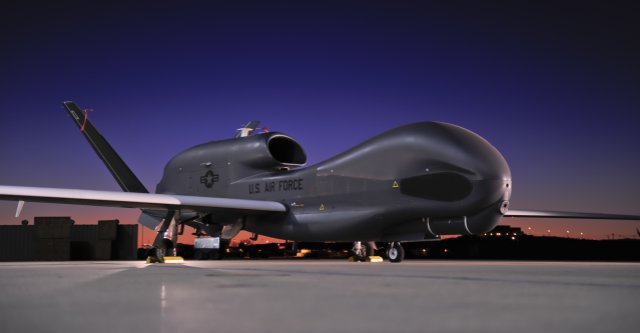Northrop Grumman’s Block 30 RQ-4 Global Hawk unmanned aerial system (UAS) has participated in a Nato exercise aimed at demonstrating and evaluating the alliance’s ability to coordinate and deploy critical joint intelligence, surveillance and reconnaissance (JISR) systems.
During the recent Unified Vision 2014 (UV14) exercise, the high-altitude long endurance UAS successfully flew three full-day sorties from Orland Main Air Station, Norway.
Global Hawk forms part of Nato’s future alliance ground surveillance (AGS) system that aims to provide alliance commanders with a comprehensive picture of the situation on the ground.
Comprising satellites, aircrafts, unmanned aerial vehicles, naval vessels, ground sensors and human intelligence from 18 Nato member states, the trial is expected to help the alliance prepare for the introduction of AGS capability and enhance data sharing with other ISR systems provided by its members.
Nato Alliance Ground Surveillance Management Agency (NAGSMA) general manager Jim Edge said the exercise demonstrated the powerful role unmanned systems can play in helping Nato conduct its future ISR missions.
“It was great to see how existing airspace procedures enabled the seamless integration of a NATO AGS into European airspace for this trial,” Edge said.
Northrop and its European industry team also supported the joint force commander with daily high-resolution simulations of Nato AGS and daily live data surveillance products from interoperable systems.
With a main operating base at Sigonella, Sicily, and comprising five Global Hawk UAVs, the AGS system is expected to be able to fly at 60,000ft for more than 30 hours in support of Nato’s global requirements.
Additional equipment includes a multimode multi-platform radar technology insertion (MP-RTIP) radar sensor, and European-sourced ground assets, mobile and transportable ground stations, and a range of interoperable Nato and national command, control, intelligence, surveillance and reconnaissance systems.
The system is being acquired along with 15 allies, including Bulgaria, Czech Republic, Denmark, Estonia, Germany, Italy, Latvia, Lithuania, Luxembourg, Norway, Poland, Romania, Slovakia, Slovenia and the US.
Source: Airforce Technology

